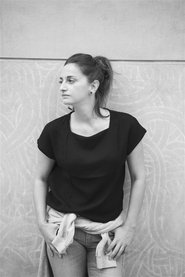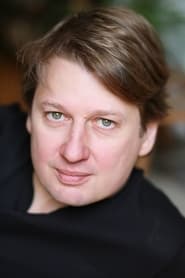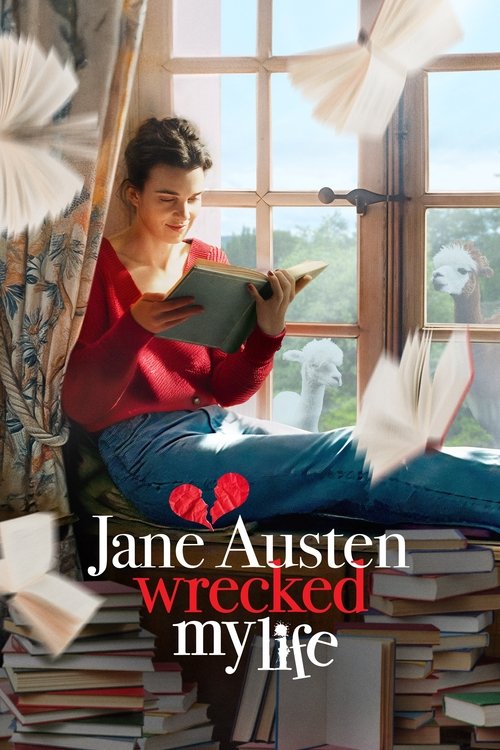
Ask Your Own Question
What is the plot?
A heavy rain thuds against the clapboard of a two-story house on the edge of a small Midwestern town as the film opens. Inside the foyer a large upright piano fills the front parlor, its worn wood scarred and lacquer dulled by decades of hands and a long history. The camera lingers on the face of the instrument: carved figures and patterns thread across the woodwork, faces and scenes incised into the veneer, the grooves dark with age. A brass nameplate near the fallboard reads SUTTER & SONS. Dust motes tilt in a single shaft of light that falls across the keys. There is a silence heavy enough to carry a history.
Berniece Charles (Danielle Deadwyler) keeps her hands folded, standing in the doorway to the parlor. She moves carefully as if the floorboards themselves will betray her. Berniece's jaw tightens as she watches the piano, then she turns away and walks through the house, passing framed photographs and household relics. She speaks aloud at one point, a terse address to the room: she refuses to touch the instrument, refuses to let music stir whatever lives inside that wood. Her voice holds an old wound: she remembers the faces incised into the piano by an enslaved ancestor and the cost that they delivered for those hands to carve. The camera cuts to close-ups of the carvings--figures with hollowed eyes, a knife or plow, a scene of labor--each gouge a sharp testament that Berniece treats like an open wound.
Avery (Corey Hawkins) arrives at the house shortly after dusk, damp from the rain and carrying a worn leather Bible. He removes his hat and wipes rain from his brow before he steps over the threshold. Avery moves with the deliberate attention of a man who believes in ritual. He addresses Berniece respectfully, in measured sentences that edge toward prayer. He tells her he has felt something wrong since he first passed the house on his way home; he believes a presence lingers. Berniece listens with a guarded skepticism that slips to anger whenever Avery mentions the piano's name. She complains about how the instrument keeps the past alive, how it keeps a spirit tethered to the room. Avery answers that spirits do not belong to women who can't bear to play. He places his hand on the shoulder of the piano and says that he believes a blessing can sever the hold that whatever haunts the home has over them.
Avery organizes a blessing. He clears the parlor table and spreads an old cloth across it. He lights tapered candles and places them in a semicircle around the upright. He lays his Bible on the music stand and flips through to Psalms, murmuring as he recites passages with the cadence of a practiced supplicant. He sprinkles holy water from a small vial in slow arcs that scatter on polished wood; the water beads and rolls toward the carved faces, gleaming in their hollows. He speaks the words of an exorcism adapted to his own faith, calling on mercy and naming the house as a vessel of the living, not the dead. Berniece watches him but does not join. She keeps her distance, fists clenched at her sides.
Avery insists on addressing the piano directly. He tells the instrument that this house will be a place of the living and commands whatever dwells there to depart. When he calls the name James Sutter aloud, the air in the room drops; the candles gutter. A faint sound like a scraping fingernail echoes from the shadowed corner where the piano sits. Avery continues, louder now, pressing his voice into the room. He runs his hand along the carved faces as he speaks, tracing the indentations that mark the work of the ancestor. The wood is cool under his palm and there is a vibration that trembles through the grain as if answering.
That night the house does not sleep. Berniece lies awake listening to floors creak and to a soft, uneven thump from the parlor, like a heartbeat spotted through plaster. She rises and tiptoes down the hall. When she pushes the parlor door open she finds the lid of the piano slightly raised; a single key depresses and lifts on its own. A low sound scratches the air, and for a slow, long moment the parlor belongs to something else. Berniece backs away and slams the door; she leans against it, breathing sharply. She whispers to herself that she will not be a coward; she will not let a name on a brass plate rule her life.
Avery returns over the following days, unrelenting in his conviction that spiritual intervention can heal the household. He stands at the piano and prays, then reads aloud from the Gospel. He brings a pocketknife and carves a tiny cross into the underside of the music desk, pressing it into the wood like a ledger entry. One evening, after Avery's prayer, a shadow steps from the piano's carved reliefs and looms in the corner of the room: a tall, dark figure with shoulders squared in the manner of a man who owned a plantation. A name forms on a whispering breeze--James Sutter--coming from a place that is both near and not. The figure lingers without fully taking shape, watching Avery as if assessing a trespasser. Avery keeps his voice steady and makes the sign of the cross. The figure's features harden and a thin laughter slides across the room, amused at piety.
Berniece refuses to yield to fear alone. She tells Avery once that the piano is not only wood and string; it is the ledger of her family's suffering and survival. It carries the punishments, the bargains, the names. She does not want to summon pain again. Avery counters that leaving the piano in silence allows the spirit to hold more power than if the living dared to make it a living instrument once more. They argue late into the night. Keys click under Berniece's fingertips as she angrily snaps the fallboard shut, but she will not play. Her refusal is stubborn and fierce, an act of will rather than wisdom.
The presence grows bolder after each ritual. It moves small objects from one side of the room to another, knocks the metronome off its stand, and causes the chandelier to swing though no draft intrudes. The carved faces on the piano seem to shift in the candlelight; one night the rightmost face's mouth appears to lift in the hint of a sneer. The spectral Sutter increases his pressure on the house by appearing in dreams--Berniece wakes gasping, hands clawing the sheets--then in waking vision: a muddy footprint on the parlor rug that dissolves under Avery's heel when he tries to follow it. He begins to speak through the house, a voice that sounds old and dry as leaves, asserting ownership, lamenting loss, and scoffing at any attempt to command him away.
Avery organizes a larger rite. Word spreads slowly through the neighborhood; he invites no more people than are necessary, but he brings a trove of fervor into the parlor nonetheless. He sets knives, silver coins, and old family photographs on the table. He hums hymns to themselves in low tones meant to undergird the prayer. Berniece stands beside him, fingers clenched in a handkerchief. She has not touched the keys, and she tells Avery that the last time she played was the last time she spoke to the memory that sits under the piano's skin. She is a woman both terrified and determined; she will not be the plaything of a name from the past.
On the night the ritual reaches its apex, the storm returns. Rain lashes the windows; wind lifts the curtains like white flags. The candles burn low. Avery calls for the house to be cleansed, for the pained specter to be released. When he calls "James Sutter" once more the figure steps forward into greater presence: a shape outlined in shadow at first, then features forming--squat, hard jaw, eyes that pass over the people in the room with a measured contempt. He speaks with an accent that belongs to a different time and ownership. He tells the living they have no right to the house, that the piano is his still in spirit, that his name carved on the brass forbids anyone else to lay claim to what he once possessed. His voice rings like metal on wood.
Avery raises his Bible and summons a passage, speaking words that pull at air like a tide. The candles flare and then dim as if the room is drawing in breath as well. Berniece cannot hold still any longer. The carved faces stare at her like mirrors that show only the past. Sutter's shadow moves to the piano and lays a ghostly hand on the lid. The lid slams down of its own accord, all the force of a man shattering wood. The entire room jolts. Avery staggers and calls for Berniece to step back. She hesitates for a fraction of a second, and then as if a decision snaps into place, she moves toward the piano.
When she reaches the instrument she does not lift the lid with a dramatic flourish; she lifts it slowly, with the care of someone opening a coffin but also a woman who has made a deliberate choice to speak with an old voice. She seats herself on the bench. Her fingers hover above the keys, trembling. The camera tightens on her hands; the knuckles whiten. She closes her eyes and breathes in a way that makes her shoulders rise. She does not pray aloud; instead she lets the breath steady as a metronome, then she presses a single chord.
The chord blooms like a wound and then a salve: low, resonant, a reminder of the earth. The spectral figure recoils as if struck. Berniece adds a line, left hand moving through a rhythm that tethers the center of the song to the ground. She plays a pattern familiar and precise, a progression that is neither grand show nor wanton noise but a shaping, careful and exact. The carved faces on the piano seem to listen. Sutter shifts, anger foxing his features. He lashes out by sending a gale through the room that lifts the curtains and scatters the hymn pages across the floor in a confetti of paper. The candle flames bow but do not die.
Berniece's playing grows bolder. She places weight in the lower register, singing each note into the room as if to place a name upon it. The music moves with the confidence of the living squarely claiming ground. The ghost tries to choke off the sound by thudding the lid down and slamming it shut again and again. Each time Berniece pulls back for only a breath, then forces the bench forward and reopens the lid. Strings vibrate under the attack; a harmonic overtone rings like a voice answering another voice.
As she plays, scenes of the house's past arrive like projections in the corners: images of hands kneading dough, of sweat and labor, of a man with a whip, of the face of the ancestor who carved the piano, working by candle light and carving the last line with a trembling hand. These images sweep across the parlor like currents, and Berniece plays them into being with repetition and melody. Sutter's head tilts; he hisses about legacy, about who owns history and who owns bodies. He strides toward Berniece in the space between notes as if to snatch the sound from the air.
Avery steps forward and raises his voice in prayer, but the voice is small beneath the music and the rising wind. There comes a moment when the ghost lunges, the dark visible hand of Sutter sweeping across the bench to grab at Berniece. His fingers close through the gap of air but find string and wood. The bench jolts beneath her; she almost falls. Berniece does not relinquish the melody. She leans into the attack; she pushes her left hand deeper into the bass and lets her right hand trace an ascending arpeggio that climbs like breath rising through a throat.
The room seems to hang on a single chord. Then Berniece shifts into a passage that the carvings themselves seem to answer, a sequence of notes that echo the rhythms etched into the piano's surface by the ancestor. When she strikes the final note the sound does not die but holds and gathers. The spectral Sutter reels as if the note has struck bone. He lets out a sound that is neither human nor wholly animal, a tearing of air. For a single instant his shape cracks and inside the fissure something impossible appears: the lined face of the ancestor who once carved the piano, his eyes wet, his mouth set. The ancestor's gaze passes through Sutter and lands on Berniece with recognition. Berniece does not stop. She plays the pattern again, more softly, as if to soothe a living child.
Sutter staggers backward and the room convulses; a gust sucks out the candle flames. Where there had been a man-shaped shadow there is now a smear of black that folds inward on itself like a cloth being drawn through a narrow seam. The carved faces on the piano do not move; they remain, their hollows catching the new light in a way that looks like a release. Avery collapses to his knees and murmurs a thanksgiving prayer, though his voice is hoarse.
When the final echo fades, the parlor is not the same. The air feels warmer. The rain outside that had matched the tempo of the night has slowed to a soft patter. Berniece remains seated at the piano, her hands resting lightly on the keys as if she has just set down a fragile thing. She opens her eyes and a single tear slips down her cheek. She looks at Avery and offers a small, almost imperceptible nod. The two of them sit in the quiet like people who have been present at a birth: tired, astonished, and defined by what has been done.
There are no sudden proclamations, no dramatic unmasking. No one in the room dies. The house does not collapse. The brass nameplate remains on the instrument, and the carvings remain in their grooves, but the weight that once emanated from them has shifted. The figures no longer seem to press against the varnish with the same hungry insistence. The piano is again an object of music; it is an artifact of labor that will no longer enforce silence upon those who live in the house.
In the final scene Berniece rises from the bench and walks through the parlor with hands that brush across the polished rail of the staircase as if saying farewell to a memory that will now rest. She takes the handkerchief from her pocket and dabs at her face. Avery picks up his Bible, smooths the pages, and steps toward the door. He pauses and looks back at the piano, then at Berniece, and offers words that are part gratitude and part benediction. Berniece lifts the fallboard once more and plays a simple, calm passage--low, warming notes that fill the room not with exorcism but with the first true domestic music it has heard in years.
The camera pulls back through the front window as Berniece's playing threads outward into the night. The rain has stopped. The house sits beneath a clear patch of sky. Inside, the piano hums with the life of the living. Concluding the film, the image holds on Berniece's hands on the ivory and a subtle smile that suggests the work of memory and the authority she now claims over it. The house is quiet in a way that does not press upon anyone; the presence that named itself James Sutter no longer shapes the lives under its roof. The screen fades to black on the steady, human sound of music.
What is the ending?
Short, Simple Narrative of the Ending
Magalie, a social media influencer famous for shocking online content, retreats to a chalet after a bizarre and mysterious accident involving a piano during a film shoot. As she attempts to recover and reflect, her life and the incident become blurred with reality and fiction, leaving both her and the audience uncertain about what truly happened and what comes next for her, with no clear resolution or closure.
Expanded, Descriptive Narrative of the Ending
The final act of The Piano Accident (French: L'Accident de piano) brings Magalie, the hyper-mediatized influencer, to a remote chalet where she seeks solitude and escape from the chaos surrounding the mysterious piano incident that disrupted her film shoot. Her personal assistant accompanies her, a constant but seemingly distant presence, unsure of how to support Magalie as her mental state becomes increasingly fragile.
The chalet itself is quiet and dimly lit, with large windows that look out onto a dense, snowy forest--creating both a sense of isolation and a feeling of being watched. Magalie spends much of her time wandering from room to room, occasionally pausing at a grand piano that stands in the corner of the living area, its presence a haunting reminder of the accident. She approaches the piano several times, running her fingers along the keys but never playing, as though the instrument itself is both a magnet and a source of fear.
Magalie's phone, previously a constant source of notifications and validation, is now mostly ignored. However, she cannot resist checking social media from time to time, scrolling through comments and messages that alternate between support and accusations of faking the accident for publicity. The assistant tries to distract her with simple routines--preparing meals, suggesting walks in the snow--but Magalie's attention is always drawn back to the piano and her thoughts, which become increasingly disjointed.
One evening, as the sun sets and the chalet grows darker, Magalie sits alone at the piano. She stares at her reflection in the polished wood, her face pale and expression unreadable. The assistant watches from the doorway, uncertain whether to approach or give her space. Slowly, Magalie raises her hands above the keyboard, hesitates, and then abruptly slams the lid shut, startling herself and the assistant. The loud noise echoes through the chalet, punctuating the silence that has dominated their days.
As the film nears its conclusion, Magalie is seen standing at the window, looking out into the night. She whispers something to herself--perhaps a question, perhaps a lament--but her words are unclear. The assistant, sensing the tension, asks if she is okay. Magalie does not answer; instead, she turns away from the window, and the camera lingers on her face, capturing a mix of sadness, confusion, and something resembling determination.
The final scene shows Magalie stepping outside, leaving the chalet and walking into the snow-covered landscape. The assistant does not follow. Magalie's footprints are visible for a few paces before she disappears into the darkness, her fate left unresolved. The camera lingers on the abandoned piano, the silent chalet, and the untouched snow, leaving the audience to wonder whether Magalie has found a new path or simply vanished into the void.
Is there a post-credit scene?
The movie The Piano Accident (2025) does not have any publicly documented post-credits scene. Available information about the film, including its plot, cast, and production details, does not mention or describe any post-credits or mid-credits scenes. Additionally, general lists of films with post-credits scenes do not include The Piano Accident as having one.
Therefore, based on current sources, there is no post-credits scene in The Piano Accident.
What specific accident does Magalie suffer while filming one of her videos in The Piano Accident?
Magalie suffers a serious accident involving a piano while filming one of her shocking videos, which leads her to retreat to a mountain chalet to recover.
How does Magalie's congenital insensitivity to pain affect her actions and the plot in The Piano Accident?
Magalie's congenital insensitivity to pain allows her to perform extreme and dangerous stunts involving electrocution, hammers, ice picks, boiling water, and other painful acts without feeling pain, which is central to her shocking social media content and influences the story's tension and her vulnerability after the accident.
What role does Patrick, Magalie's assistant, play during her retreat in the mountains?
Patrick, Magalie's longtime handyman and personal assistant, accompanies her to the mountain chalet where she isolates herself after the accident, supporting her during her recovery and dealing with the complications that arise from the journalist's blackmail.
Who is the journalist blackmailing Magalie, and what leverage does she have over her?
The journalist, Simone Herzog, knows Magalie's secret about her congenital insensitivity to pain and the dangerous nature of her videos; she uses this information to blackmail Magalie into agreeing to an exclusive interview, threatening to report her to the police otherwise.
What is the significance of Magalie keeping her teenage dental braces in the film?
Magalie keeps her teenage dental braces as a stylistic choice that contributes to her unique and shocking public persona as a social media influencer, symbolizing her defiance and the constructed nature of her celebrity image.
Is this family friendly?
For the 2025 movie The Piano Accident (L'Accident de Piano) directed by Quentin Dupieux, there is limited information available about its content. However, given that the film is described as an absurd comedy with elements of black humor and it involves a character who posts shocking content on social media, it may not be suitable for all ages.
Potential concerns for family-friendliness or sensitivity include:
- Mature themes: The film involves a character who gained fame by posting shocking content, which might be disturbing.
- Dark humor: Black humor often includes themes or jokes that might not be appropriate for younger audiences or sensitive viewers.
- Accident depiction: The plot mentions a serious accident during a video shoot, which could be upsetting if graphically depicted.
Without specific details on the nature of these scenes, it's difficult to provide a definitive assessment, but these elements suggest that the movie might not be suitable for young children or overly sensitive viewers.

































